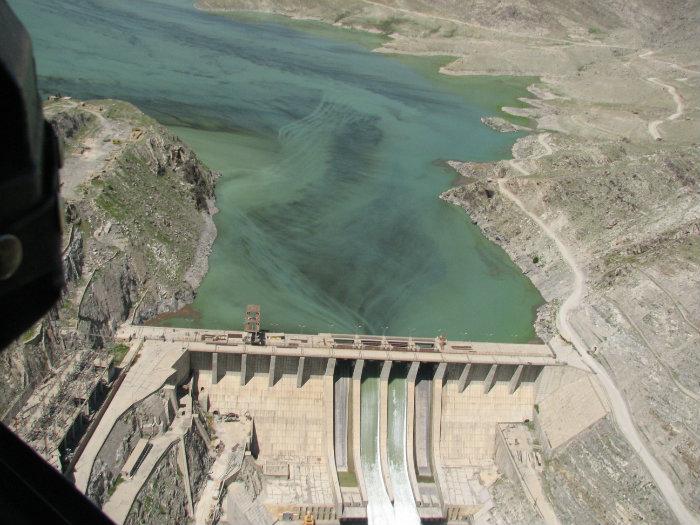by Muhammad Mohsin Iqbal
Hazrat Ali (RA) once said, “If you do good to someone, then avoid their evil.” This timeless wisdom seems to echo across centuries, finding its living reflection in Pakistan’s relationship with Afghanistan. For decades, Pakistan has extended its hand of generosity to its western neighbour—offering shelter, dignity, and opportunity. Millions of Afghans who crossed the border empty-handed found not only refuge but also prosperity in Pakistan. They were given access to education, healthcare, and employment. Many built thriving businesses, acquired properties, and even gained Pakistani citizenship. Yet, in a cruel twist of fate, those who were nurtured with compassion now appear to be aligning themselves with the enemies of their benefactor.

The latest developments emerging from Kabul paint a troubling picture. According to credible reports, the Afghan Taliban regime, in collaboration with India, is planning to construct a series of dams on rivers that feed directly into Pakistan. It is a new and more insidious form of aggression—one that strikes not with guns or tanks, but with control over water, the very lifeblood of the nation. After suffering humiliation on the battlefield, India seems to have shifted its hostility into another domain; water warfare, waged through Afghan soil.
According to the report, Taliban government had entered into an understanding with New Delhi for the construction of a major dam on the Kunar River, a key tributary of the Kabul River. The plan, as the report disclosed, is aimed at restricting or even halting the water flow into Pakistan. In return, India has pledged financial assistance worth one billion US dollars and has begun providing technical expertise for the construction of several other dams, including Naghlu, Duronta, Shahtoot, Shah Waros, Gamberi, and Baghdara.
Experts warn that such projects could have devastating consequences for Pakistan’s water security. The Kabul River contributes approximately 16.5 million acre-feet of water annually to Pakistan, sustaining vital crops like wheat, maize, and sugarcane in Khyber Pakhtunkhwa’s fertile districts of Peshawar, Charsadda, and Nowshera. Any obstruction or manipulation of this water flow would endanger the livelihood of millions and destabilize Pakistan’s already fragile agricultural balance.
This emerging nexus between India and Afghanistan represents not just a technical challenge but a strategic threat. Water, in this context, becomes an instrument of coercion. Pakistan’s officials have therefore taken a clear and unequivocal stance: water security is national security. The state has asserted that no country will be permitted to use rivers flowing into Pakistan as a political or military lever.
India’s record in this domain leaves little room for optimism. Despite the Indus Waters Treaty of 1960—brokered by the World Bank and considered one of the most successful water-sharing agreements in history—India has repeatedly violated both its spirit and letter. Over the decades, India has built hundreds small and large dams on the western rivers allocated to Pakistan, including the Chenab, Jhelum, and Indus. Major projects such as Baglihar Dam on Chenab, Kishanganga on Jhelum, and Ratle and Pakal Dul on the Indus basin have been constructed unilaterally, disregarding Pakistan’s objections and flouting international arbitration rulings. These actions have not only undermined trust but have emboldened India to pursue similar tactics on the western front through Afghanistan.
Recognizing the gravity of the threat, Pakistan has begun formulating a comprehensive defensive response. At the heart of this strategy lies the Chitral River Diversion Project, a bold and visionary initiative designed to neutralize any attempt at water aggression. The plan involves diverting the Chitral River into the Swat Basin before it crosses into Afghan territory. This would serve multiple strategic objectives: ensuring the security of Pakistan’s water flow, generating up to 2,453 megawatts of clean, renewable energy, bringing thousands of acres of barren land under cultivation, and augmenting the storage capacities of the Warsak and Mohmand dams. Furthermore, the project will help mitigate flood risks that have repeatedly caused devastation in the northwestern regions of the country.
Officials have affirmed that this project falls fully within Pakistan’s sovereign rights and is entirely compliant with international water laws. By asserting control over its natural resources, Pakistan is not violating any treaty but rather protecting its rightful share of water from political manipulation and strategic encirclement.
What makes this situation particularly distressing is the betrayal embedded within it. Pakistan’s generosity toward Afghanistan has no parallel in modern history. It absorbed the world’s largest refugee population for more than four decades, often at great economic and social cost. Yet, instead of gratitude, there emerges a collaboration that threatens Pakistan’s survival. India’s hand in this scheme is unmistakable, for it serves its long-standing policy of encircling Pakistan—militarily from the east and strategically from the west.
The people and institutions of Pakistan now stand united in the belief that water aggression—no matter in what form—will not be tolerated. Diplomatically, Pakistan is preparing to engage international forums, including the United Nations and the International Court of Arbitration, to expose and counter this emerging water nexus. Technically, it is investing in projects that enhance water storage, efficiency, and sustainability. Politically, it is strengthening consensus across parties to ensure a unified national front.
Water is not just a resource; it is the pulse of Pakistan’s existence. To defend it is not a choice but a duty owed to the generations that will inherit this land. As Hazrat Ali’s (RA) wisdom reminds us, kindness must never be blind to treachery. Pakistan has done good to Afghanistan, but it must now guard itself against the evil designs that exploit its goodwill. The time has come for vigilance, unity, and decisive action—to ensure that no enemy, near or distant, can turn the rivers of life into weapons of destruction.

















